Light rain falls over Turin as we arrive in Piedmont's capital. The first impact is mesmerising. We immediately realise to be in the presence of an extraordinary city, ancient and futuristic, generous and reserved. Turin might seem a bit shy, almost like its people.
Nevertheless, it is easy to find a kind and helpful Torinese that tells you where to drink the authentic bicerin or bite into the best tramezzino (the triangular Italian sandwich was born right here in 1926).
Turin is many things: a land of avant-garde and tradition, noble and provocative, an innovation nursery in both industry and cuisine. Two days is a little time to spend with this elegant and ingenious lady, but enough to fall in love with her.
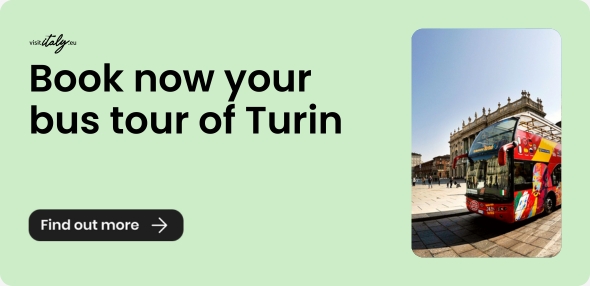
Day 1
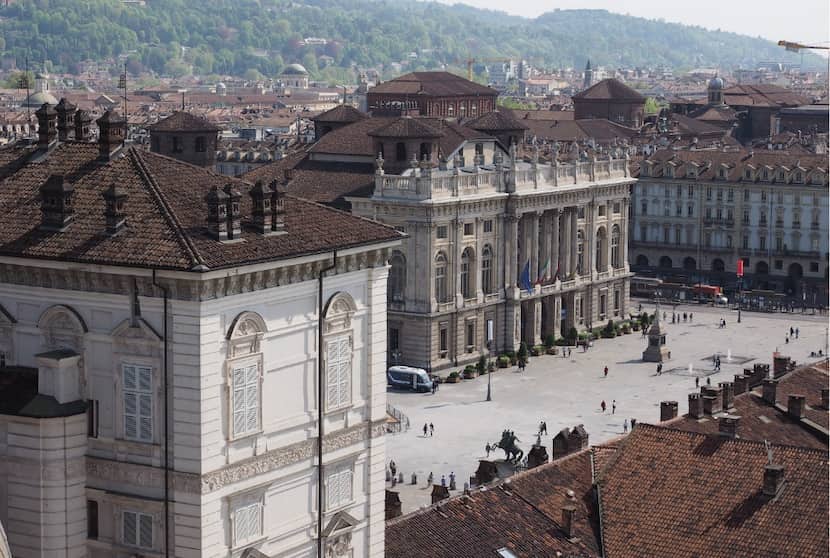
The rain does not spoil our takeover plan, thanks to the 18 kilometres of monumental porticos that have framed the centre's architecture since the 1600s. Those running along Via Pietro Micca, Via Roma and Via Po are the most impressive.
Initially, their function was what the image might suggest: a shelter for royals during their strolls under the pouring rain. Turin was the first capital of the Kingdom of Italy and the seat of the House of Savoy.
This ancient and noble past reverberates in numerous UNESCO World Heritage Sites. We have a taste of it in Piazza Castello, a monumental symbol of the city heritage. You only have to walk around and read the rich history in the square's buildings: Palazzo Madama, the first seat of the Italian Senate, the Baroque church of San Lorenzo, the Renaissance cathedral and then the magnificent Musei Reali.
We set aside Google Maps and walk under the covered arcades that earned Turin the title of city with the largest pedestrian area in Europe.
Unmissable attractions in Turin
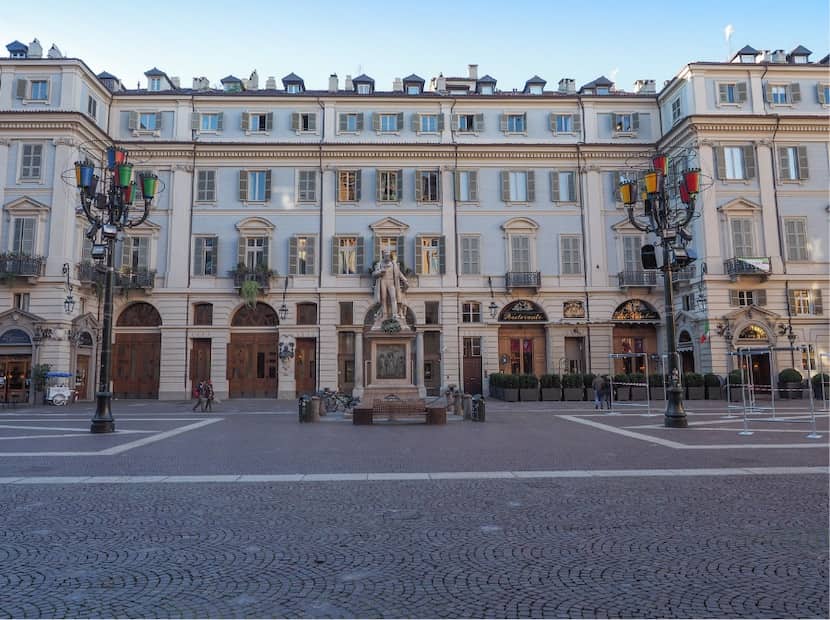
We walk along Via Po as the day clears up and easily reach some of Turin's iconic spots. First stop in Piazza Carignano, where we take advantage of a coffee break (the classic espresso was born here) to admire the baroque Palazzo dei Principi di Carignano and the namesake theatre, the oldest in town.
Nearby is the Museo Egizio, the world-famous museum of Egyptian art. We keep tracking the top sights of the Savoy capital with a visit to the Mole Antonelliana, home to the Museo Nazionale del Cinema. Starchitect Alessandro Antonelli designed the building as a synagogue in the 19th century, and it offers a spectacular view from its 85 metres of high.
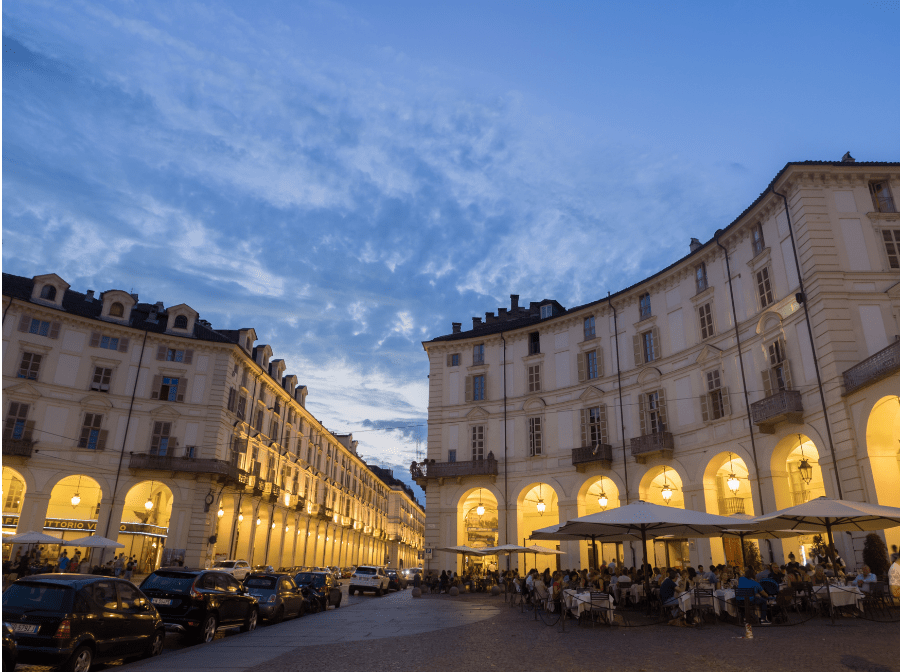
We arrive in Piazza Vittorio Veneto after stopping at Casa Scaccabarozzi, a bizarre yellowish building with surprisingly slender features: it seems just like a slice of polenta. Piazza Vittorio is a short distance away, an imposing rectangle packed with bars and restaurants along the Po's banks.
It is an excellent location to sip a Vermouth aperitivo and listen to a passionate bartender telling the story of this fortified wine: now a drink icon, it was used as a pharmaceutical product in the 18th century.
Crossing Vittorio Emanuele I Bridge, we reach the Chiesa della Gran Madre di Dio, a scenic neoclassical church. You can continue to the Villa della Regina from here: go there; its urban vineyard is one of the very few in Europe.
Turin, Italy’s little Paris
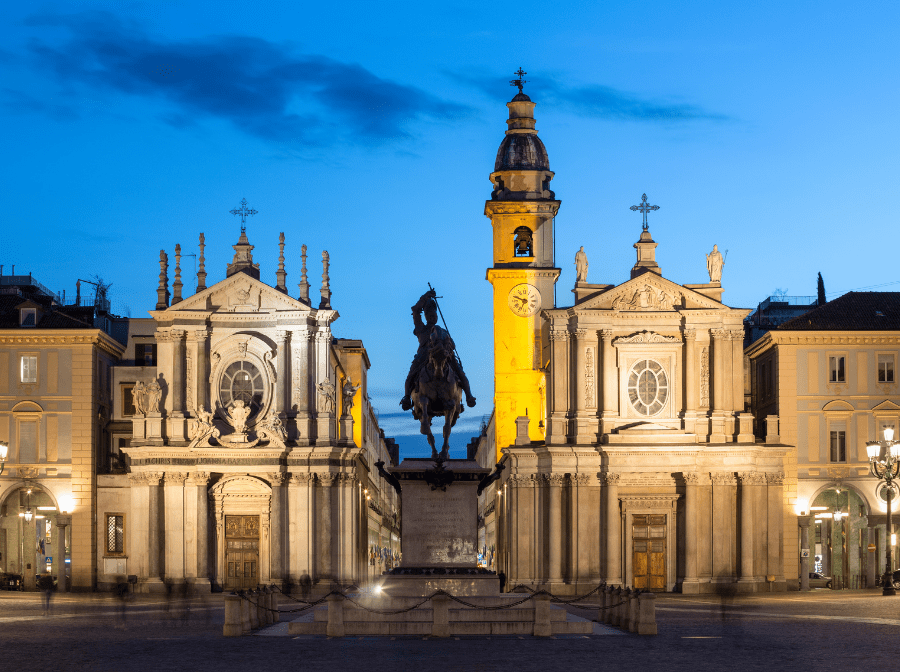
Whether you're planning a cultural weekend between museums and galleries, live the city's brilliant party scene and nightlife, or take a deep in its delicious cuisine, Turin — to misquote Audrey Hepburn — is a bit like Paris: "always a good idea".
Indeed, you will find a hint of the Ville Lumiere in its elegant tree-lined avenues and scenic galleries: Galleria Subalpina, Galleria San Federico and Galleria Umberto I.
As for the squares, Piazza San Carlo, the so-called “salotto di Torino”, boasts a true Parisian style. The equestrian statue towering in the middle depicts Duke Emanuele Filiberto. At the same time, the south-westerly side is bordered by the twin churches of Santa Cristina and San Carlo, both dating back to the 17th century.
The bars and cafes that line Piazza San Carlo used to be a meeting place for intellectuals and nobles. Even today, they tables a reference point for the city's social life. We meet Mrs Fernanda, a friendly and cheerful passerby, outside one of the crowded cafeterias: she offers us a coffee (our second) and an intriguing anecdote.
The story is about one of the luxurious buildings overlooking the square, Palazzo Turinetti di Cambiano. It is said that, on one of the windowsills, Marquise Gabriella Falletti di Villafalletto wrote a romantic message to her lover and illustrious neighbour, the poet Vittorio Alfieri.
Today, Palazzo Turinetti is also home to the San Carlo Suite, an exquisite, quiet hotel featuring nine comfortable, stylish suites. A perfect choice to live a historical and romantic atmosphere.
More info about San Carlo Suite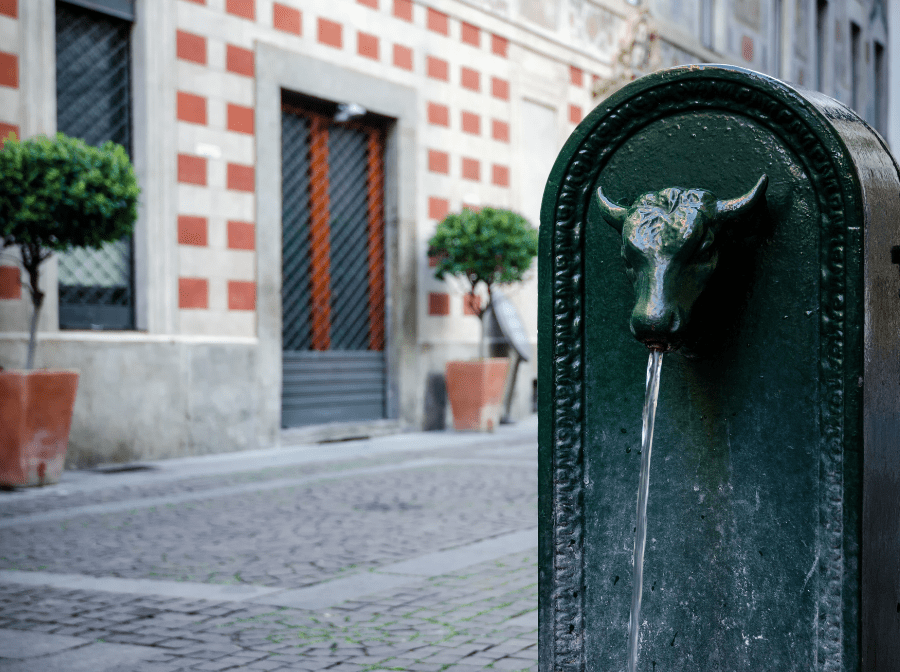
Before going ahead, we decide to take a "ride" on the rampant bull, the city's coat of arms. Legend has it that stepping on its (unfortunate) private parts brings good luck.
Also, notice that the golden figure embedded into the stone pavement in Piazza San Carlo is just one of the many taurine creatures you'll see as you wander around: the toret are, in fact, an institution. The "little bulls" are none other than water fountains capped with the animal head. There are 813 scattered all across the city: try to spot some: an app can help you in your quest.
Day 2
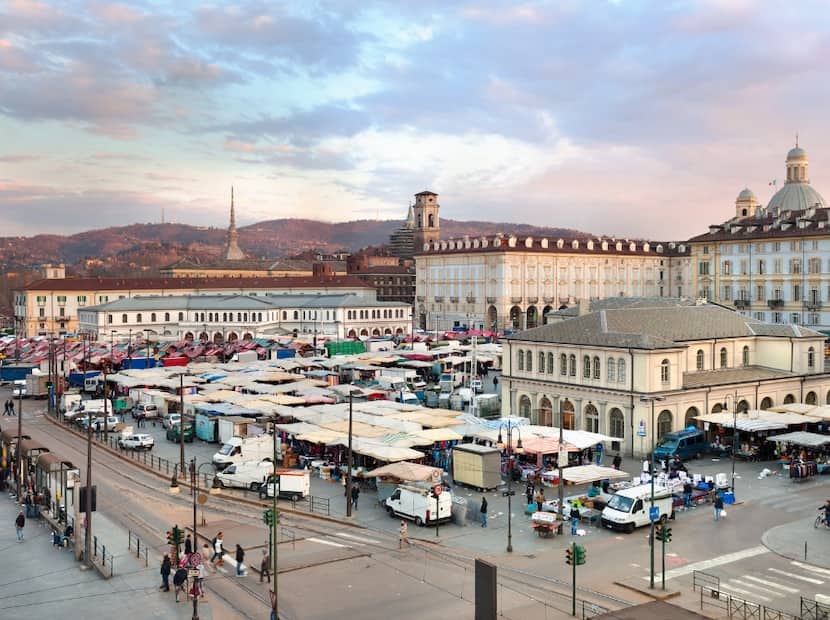
The second day starts at Porta Palazzo, more than a market: an emblem of Turin's cultural contamination. In Europe, it is undoubtedly one of the largest. We make our way among stalls and stands, and it is a bit like travelling through flavours and traditions from all over the world.
The tour of the Quadrilatero Romano represents an immersion in Turin's taste history. Ultimately, cuisine in Turin is an essential reference point: the Slow Food Movement and the concept of "zero kilometre" were born here.
Don't leave before trying agnolotti, vitello tonnato, tajarin (fresh pasta from the Langhe), roasts and truffles. And don't forget chocolate, especially gianduiotti and diablottini, the first solid bars in the world, created by the legendary Count of Cagliostro.
Between past...
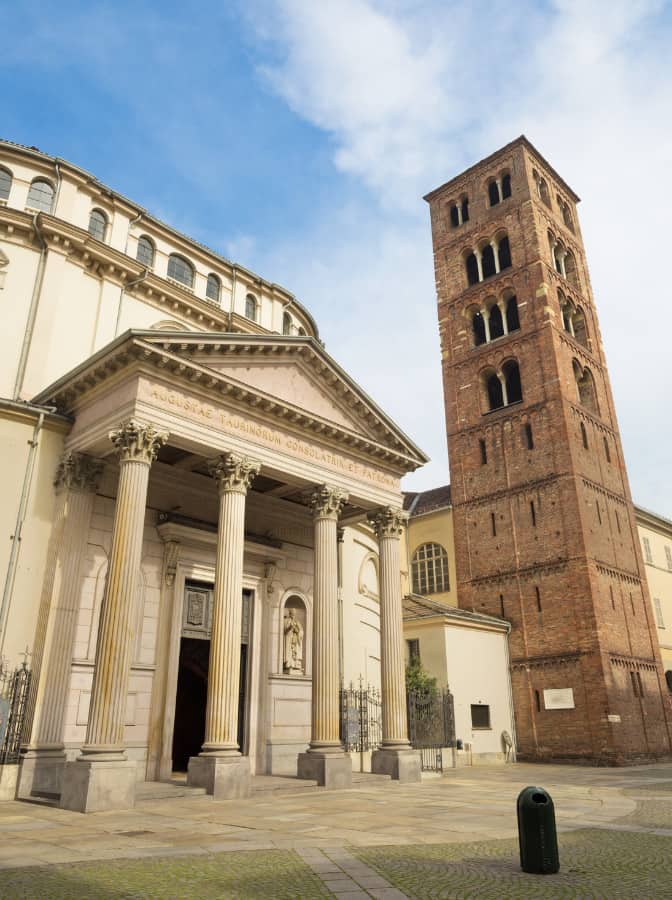
A few streets away, Piazza Emanuele Filberto is a startling corner with a Parisian atmosphere. Don't miss it: in addition to the striking architectural setting, you will also find the remains of the "ghiacciaie" used to store goods for the nearby Porta Palazzo market.
Via delle Orfane takes us to the beautiful Piazza della Consolata, the cradle of the city's signature drink, bicerin: a blend of coffee, chocolate and cream (but the recipe is secret). Here, Santa Maria della Consolazione (or simply Consolata church) is undoubtedly the eye-catcher: a Baroque sanctuary modelled on an ancient pagan temple.
Turin boasts a thousand-year history. The oldest part is confined to the so-called Quadrilatero Romano, where narrow cobbled streets wind their way between the boundaries of Via XX Settembre, Corso Regina Margherita, Via della Consolata and Via Santa Teresa. Porta Palatina, Porta Decumana and the Roman Theatre are what remains of the former Augusta Taurinorum.
A 5-minute walk takes us to the obelisk in Piazza Savoia. Some information about the place: number one, it was once known as "dle Plate" ("square of rags" in the Piedmontese dialect) because rags were sold in this piazza. Number two: buried under the stele is a box containing coins, rice, a bottle of Barbera wine, Grissini Torinesi (a type of typical breadsticks), and two issues of the Gazzetta del Popolo from 1850.
...and future
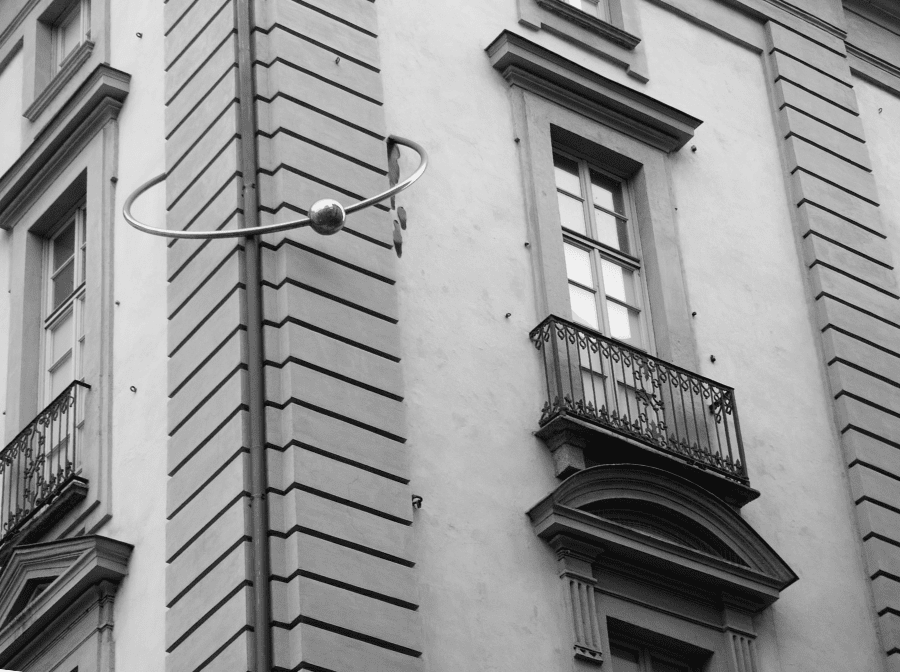
Turin overflows with original and sometimes unusual details. For instance, did you know that there is a building with a piercing ring? You can see it in Piazzetta Corpus Domini: go to Number 19 and look up at the edge of the fourth floor.
The work is called Baci rubati (stolen kisses) by the artist Corrado Levi. The installation represents the many faces of the town: noble and proletarian, traditional and modern.
When it comes to modernity and innovation, Turin knows its stuff. Its flourishing contemporary art and breakthrough architecture are aspects you'll definitely want to discover.
The metamorphosis from an industrial city to a cultural capital also involves redeveloping peripheral urban areas and former industrial plants. Don't miss the futuristic views in the Vanchiglia, Barriera di Milano and Aurora districts and look for the mural art initiatives turning Turin into a genuine open-air gallery.
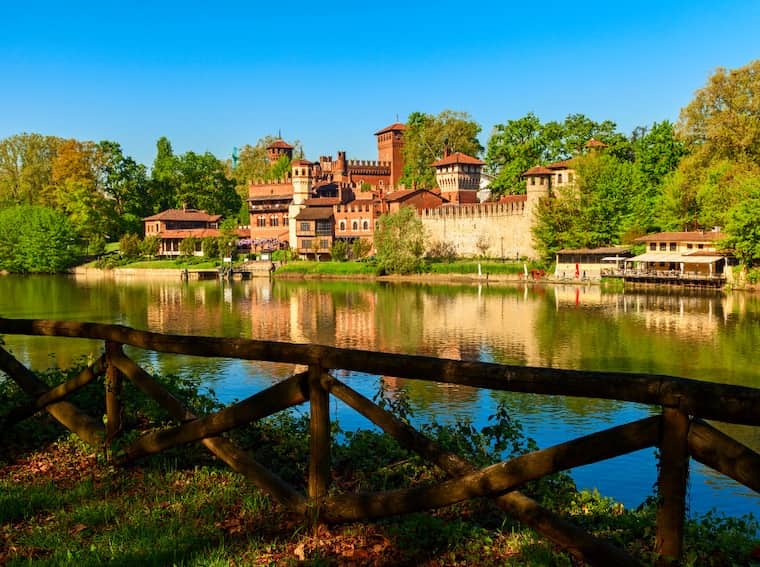
How to describe this city? A metropolis on a human scale where the presence of nature is a striking feature. Its green heart beats in Valentino Park, on the banks of the Po river. Here stands the Borgo Medievale, a hyper-realistic 19th-century reproduction of a late-medieval village featuring a majestic rocca and veritable workshops
Two days in Torino pass quickly, and it is now time to part ways. But just until the next short break.
Torino, ma chi l'ha detto che non sei bella? Antica quando la sera diventi stella Non parli perché hai paura di sapere troppo Prigione di questa Italia bella del Golfo
About the author
Written on 12/10/2021



Lorena Calise
Two days in Turin discovering the first capital of Italy, today a surprising centre of art, culture and gastronomy in constant evolution.